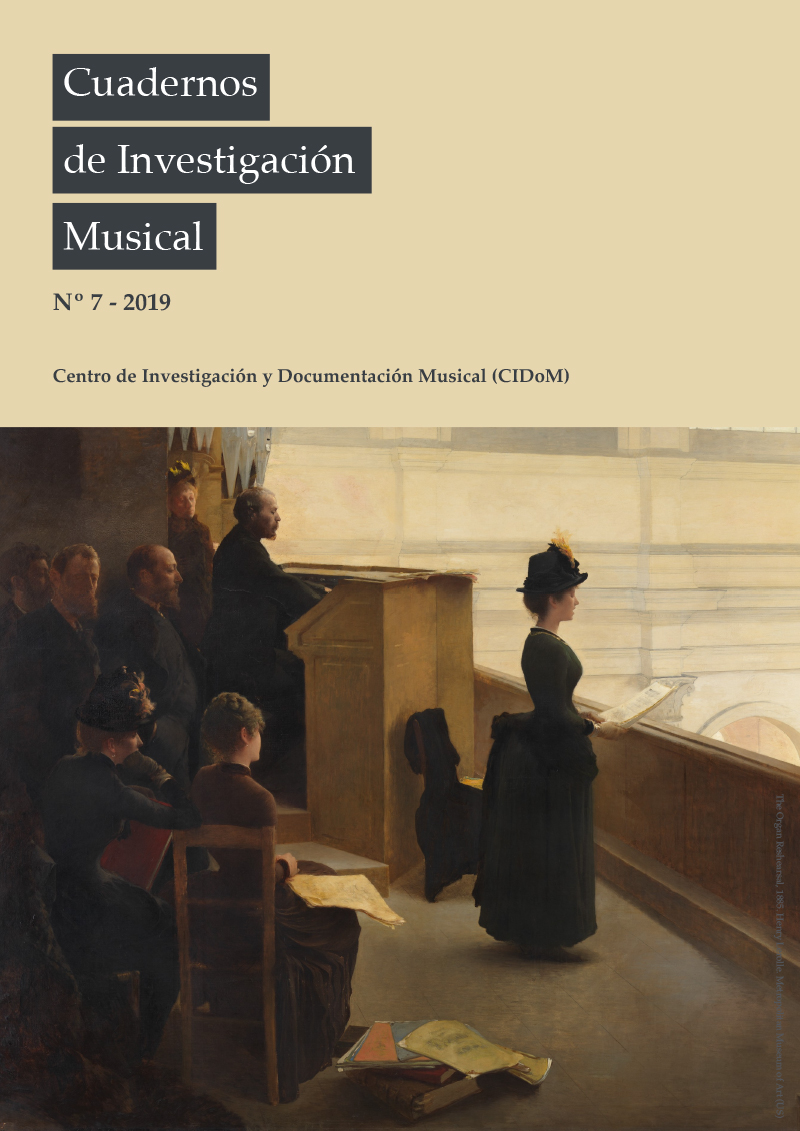Barcelona and Fashion Music. From the end of the 19th century to the beginning of the 20th century (new ballroom pieces and the arrival of jazz). The case of Clifton Worsley (*1872; †1925). Part II. An Original Musical Output, Debtor of his Time.
Main Article Content
Abstract
In the new international context (urban, industrialized, carefree and cheerful) that lies between the Universal Exhibition of Barcelona in 1888 and the International Exhibition of Barcelona in 1929, the Ciudad Condal experienced moments of a cultural, artistic and musical boom, until then unknown and unsuspected. Benefited by a thriving and increasingly wealthy bourgeoisie, and stimulated by new arrivals from abroad to its active and rich seaport, the citizens of Barcelona expressed, extrovertedly, a desire to live, to bet on modernity and to compete with other cities at the same time emerging (Paris, New York, London or Milan), which resulted in new “consumer” and entertainment music, to brighten the society dances and leisure and sports activities, witnesses of the “new times” (the Belle Époque). In this context, in which architects (L. Domènech i Montaner, J. Puig i Cadafalch, A. Gaudí), painters (R. Casas, S. Rusiñol, M. Utrillo, P. Picasso), poets (J. Maragall , J. Verdaguer, E. Marquina) and musicians (F. Pedrell, E. Granados, P. Casals, E. Morera, F. Mompou) shared audiences and scenarios, appeared the peculiar, controversial, and today practically unknown, figure of a musician, pianist, publisher and merchant, Pere Astort Ribas, who was going to use a pseudonym, as an international commercial claim, Clifton Worsley, to make himself known worldwide as the creator of the “Boston Waltz”. A quick and ephemeral fame, which soon grew thanks to the diffusion brought by the new technologies then in vogue: a new and "industrial" production and distribution of sheet music, pianola rolls, vinyl records and other mechanical audio recordings and, very particularly, the radio.
Article Details
Los autores de los artículos mantienen el copyright, no recibirán ninguna contraprestación económica por el trabajo y el mismo siempre será reconocido como exclusivamente suyo. La revista se compromete a proteger la integridad y originalidad del artículo, así como los derechos de autor que correspondan. Los autores son los únicos responsables del material, textos e imágenes que utilizan en sus respectivos trabajos, debiendo respetar siempre los derechos de autor de terceras personas, por lo que la revista no se hace responsable de lo contenido en este tema respecto al trabajo de los autores.
